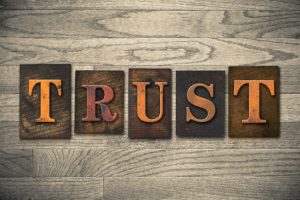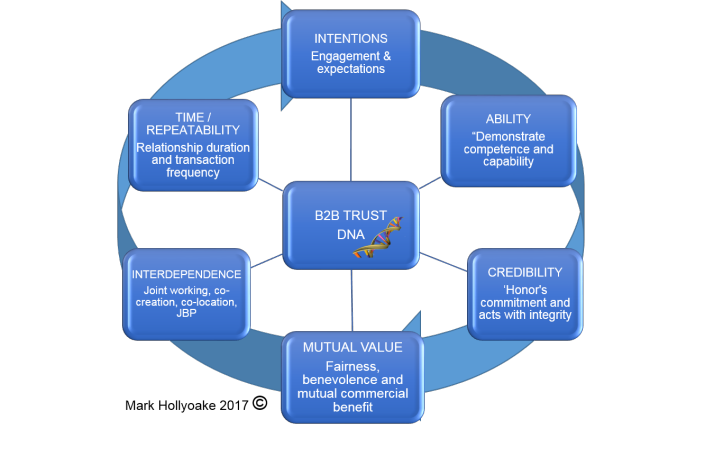Mark Hollyoake is a co-founder and director of Customer Attuned – a UK partner of Deep-Insight – and is the author of this guest blog. Mark is currently studying for his Doctorate at Southampton University, focused on Trust as a dynamic within business-to-business customer relationships. He is an expert in B2B Customer Experience (CX) and Customer Management (CM). This includes CM strategy development; execution of improvement plans including organisational modelling for customer management); programme design; and partnership & alliance development.
Like our personal world, business to business can also be surrounded by fake news, false claims, unethical behaviours and self interest. Never has there been a time when trust has been so important. It has been proven to have a positive impact on relationship development and performance. It is a fundamental element to the development of a long lasting B2B relationship. With the need for trust being at an all time high, how can I ensure my B2B relationship is trustworthy and how can I use trust to build and develop it?
During my Doctoral research, I have investigated many models and frameworks devoted to systematically growing trust within B2B. The majority of these focus on the interface between customer management and customer experience with varying degrees of competence and rigour. No doubt, your existing customer plans will be built on some of these findings.
What none of them have done to date is to analyse the available data on trust and synthesize the research to develop a cohesive framework that systematically enables B2B organisations to develop and apply Trust to a real life business to business relationship – or ‘in short’ create a whole organisation systematic approach. Doing this, gives organisations the advantage of being able to quickly identify areas where you have strong applications of Trust (interdependence) or less bonded relationships (transactional).
We have been working with B2B customer relationships for over 30 years and studying trust as an integral element of B2B relationship development for the last 20 years. Building on our practical, pragmatic and applied academic research / thinking we developed a B2B model for trust. The Trust DNA™ model has emerged from my doctoral research and a recent re-defining of trust within a B2B context (Hollyoake, Ashleigh & Higgs 2017) that develops the elements of the definition into the Truscould apply to a real live business to business relationship.
We unpack the model and explore each element, allowing you to see how it applies to one of your customer relationships
-Intentions (I), the expectations you hold for the relationship, how much you plan to get involved and strategic focus? In, essence, what’s your appetite for risk with this customer?
-Ability (A) How good are you at what you do? This relates to your competence and capability in your sector, category and/or market? This covers not only your products, solutions, services, but the people that interface within the relationship.
-Credibility (C) This is often glossed over as reputation. In this context it’s a lot more encompassing, how commitments are met – do you do what you say? How does the organization act within the relationship and the level of integrity?
Within B2B relationships, it can be the partner’s credibility within a sector and/or category, market to realise value from the relationship, for example Airbus approaching an engineering company to make plane parts, exploring development of a plane and their part in the process would come with a lot of credibility.
Mutual Value (Mv) Within the relationship, does the level of mutual commercial benefit appear fair? Do you see a level of benevolence in the relationship and the dealings between both sides.
Interdependence (In) What level of interdependence do you see within the relationship. The level of joint working, co-creation, co-location and joint business planning.
Time/Repeatability (T) How long has the relationship been in existence? How often do both sides transact or formally review the relationship?
With the Trust DNA™ established, it is possible to evaluate your relationship and the level of trust that exists. This then leads to the possibility of predicting the mutual value potential you could achieve from a customer relationship by developing different elements of this.
The output from your TRUST DNA™ assessment allows you to identify what you could do to develop and build the relationship and how you could pro-actively use trust building. i.e. you could find the scoring is down around interdependence, this may be as simple as working in their office once a week. It might come out at a more advanced level, which may require the development of a co-created joint business plan. This is just one of numerous example of how the TRUST DNA™ can be pro-actively applied to develop your business.
How do I know this works?
It’s been proven through academic research.
It’s been proven through practical application.
Would you like to know more?
Contact Mark Hollyoake here.


